New plants part 2: Sempervivum
>> Wednesday, February 16, 2011 –
sempervivum,
succulents
Yesterday I potted the sedums from my newly-arrived plant order. Since that only emptied five of the brown paper bags, there are many more to go today: 24 to be exact. They're all the same genus of cold-hardy succulents: sempervivum.
I didn't photograph every single one -- it already took me a couple of hours to plant them all up -- but there's still a lot to get to, so let's jump right in.
I didn't mention it yesterday, but the sedums all had some soil and their rootballs were wrapped with paper... actually I guess it was plastic, so there was some plastic in the packaging after all. The sempervivums (or "semps" for short) were completely bare-root in the bags:
That made it quite easy to dump each out, examine it, and plant it.
Each plant had a printed plastic tag, which is good, because there are a lot of different types of semps here. Most of them are hybrids (crossed between two different types), with the result being a lot of different colors and forms. Here's a look at a few of them:
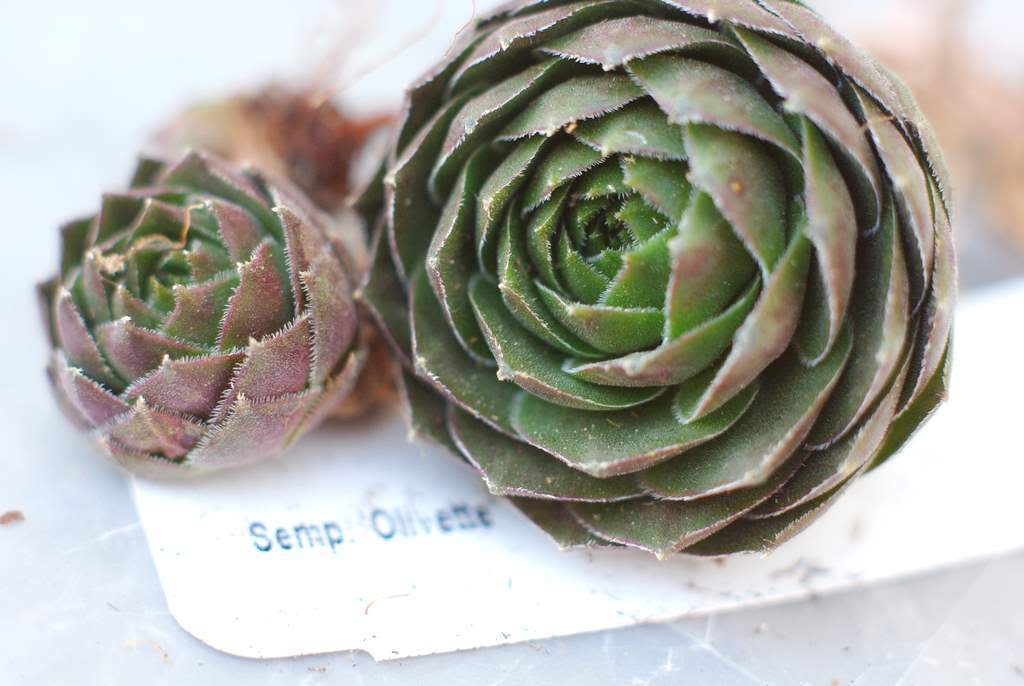 |
| Sempervivum 'Olivette' |
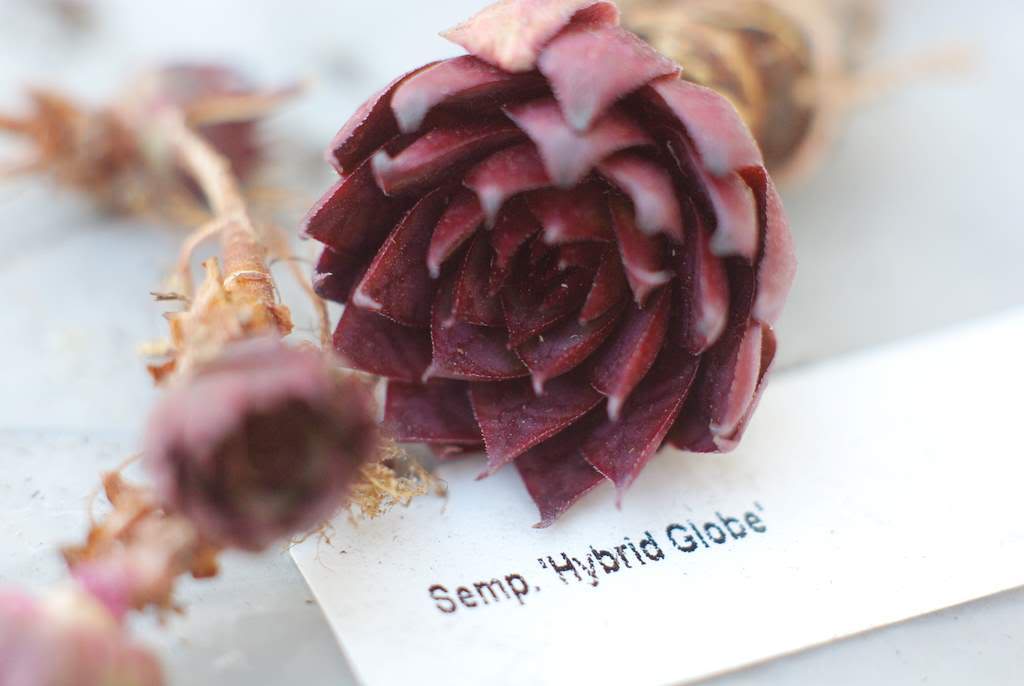 |
| Sempervivum 'Hybrid Globe' |
 |
| Sempervivum 'Cherry Tart' |
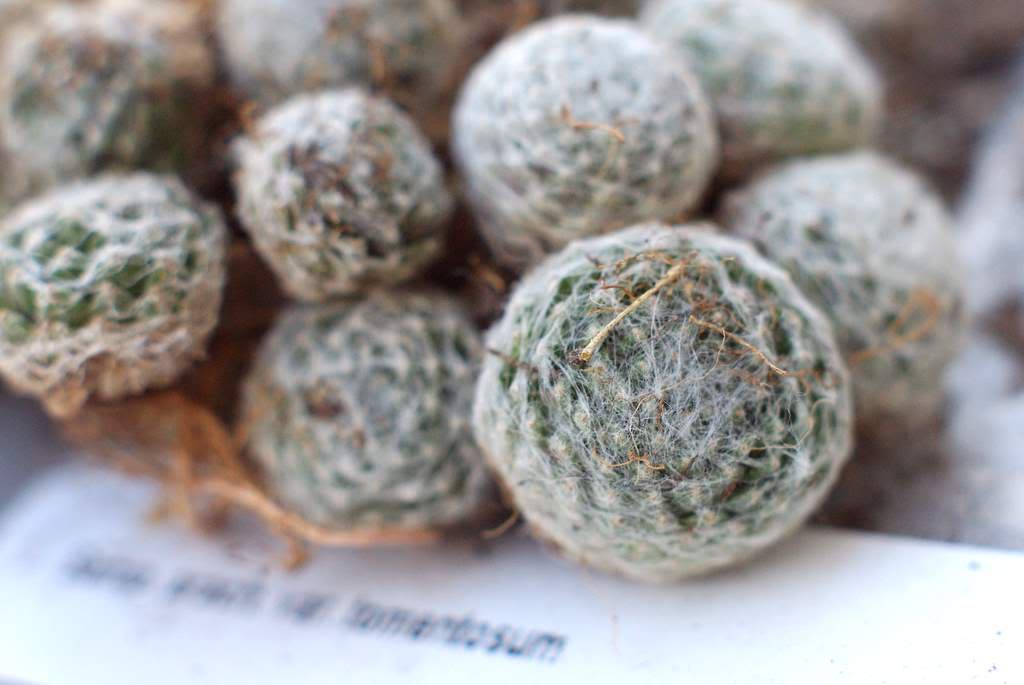 |
| Sempervivum arachnoideum var. Tomentosum |
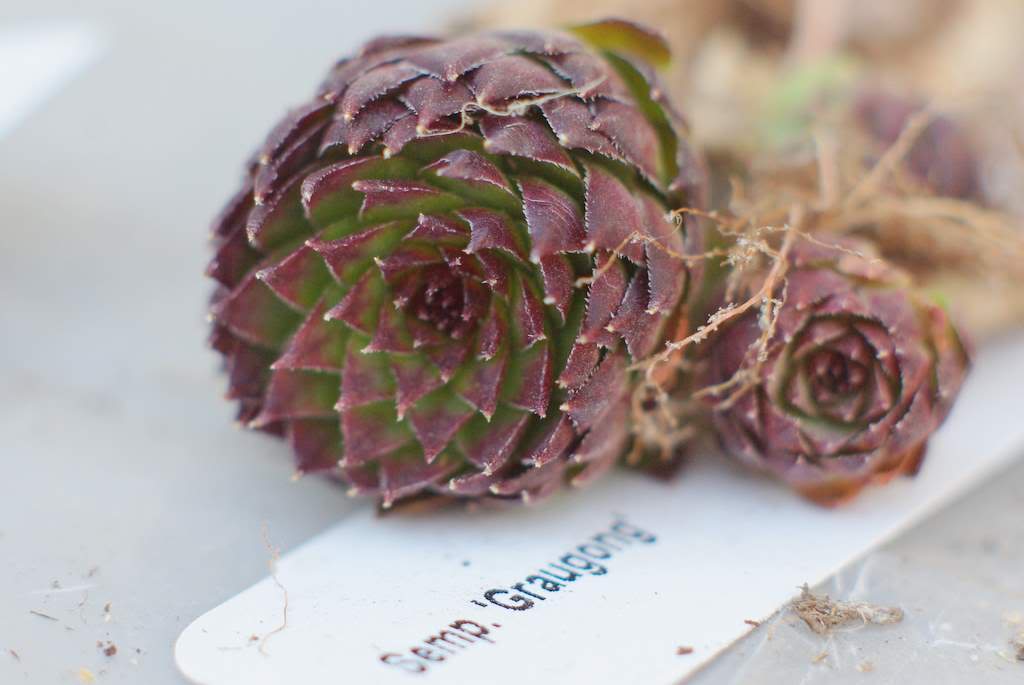 |
| Sempervivum 'Graugong' |
That's only five of them, but you can see some of the variations that will make these look so great together, covering a good portion of one of my beds. The color and textural variation will be amazing!
To pot these up I just laid a few out on the table (well, air conditioner -- I don't have a table outside), then put them in small 2" pots -- I think that's the size. They're smaller than the 4" 'quart' pots. As with the sedum I used a potting soil with extra perlite and sand added to help with drainage.
I used smaller pots mainly because they use less soil, and they take up much less room than the 4" pots. Since these will be under lights inside for at least a month and I don't have unlimited room, the space savings are important.
Some of these plants had pretty substantial roots, with almost a taproot (like a carrot):
Others were small "offsets" (or "chicks", as semps are often called "Hen and chicks" because the larger "parent" will produce small offspring all around it) with just a couple of tiny roots:
All of these will do just fine. Like sedum, semps will root very easily -- just stick a stem in the ground and it will root.
I should point out that each of these plants I received from Squaw Mountain Gardens was at least one decent-sized "parent" and a couple of small offsets. In some cases the plants were too large or had too many offsets to fit in the small pots, so I split them into two pots.
Once they were all potted up, they looked so cool:
You can really see the variety of textures and colors when they're side-by-side like this. The plants are a little sad looking because they've been out in the air (in their bags) for about a week, but they'll perk up once they rehydrate and start growing. Like sedum, I expect many of these will change colors, and will most likely lose some of their redness. Others may turn even more red in the summer. Honestly I'm not sure exactly what to expect, since I've never grown more than one or two varieties of semps at a time before. I will definitely post more photos after they've been growing for a while.
This last photo was taken after they've been under the lights for a couple of days:
Besides looking more vibrant than they did in the earlier photo (taken in the shade), I do think they're perking up and have started to change a little bit already, but that could just be my imagination. I check up on them several times a day, as I think they're just so interesting!
I can't wait to see them larger and in the ground!
.
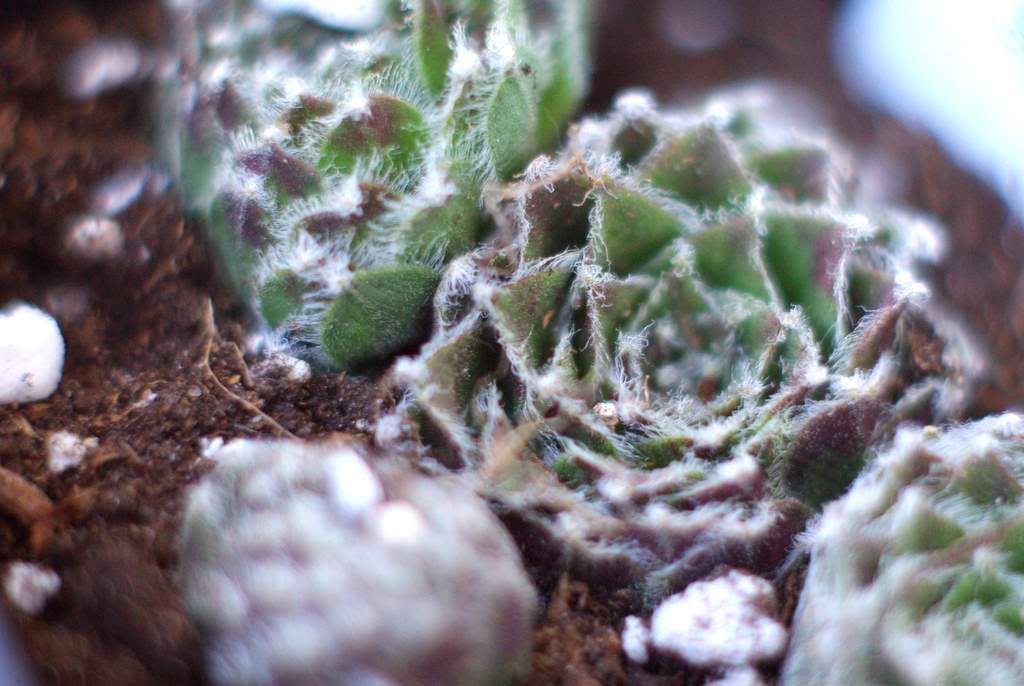
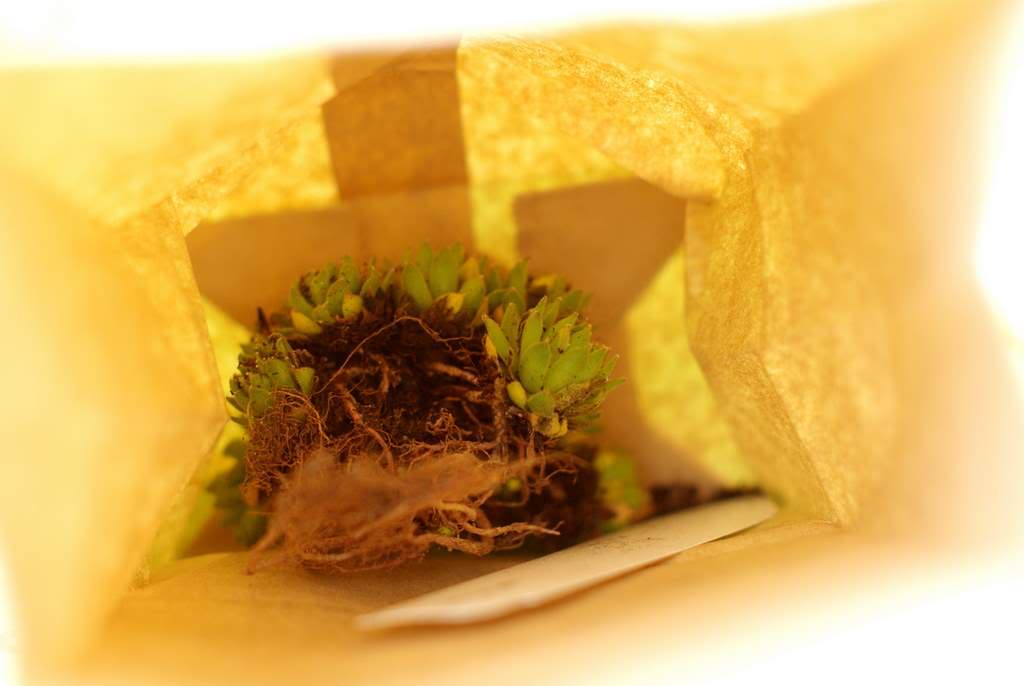
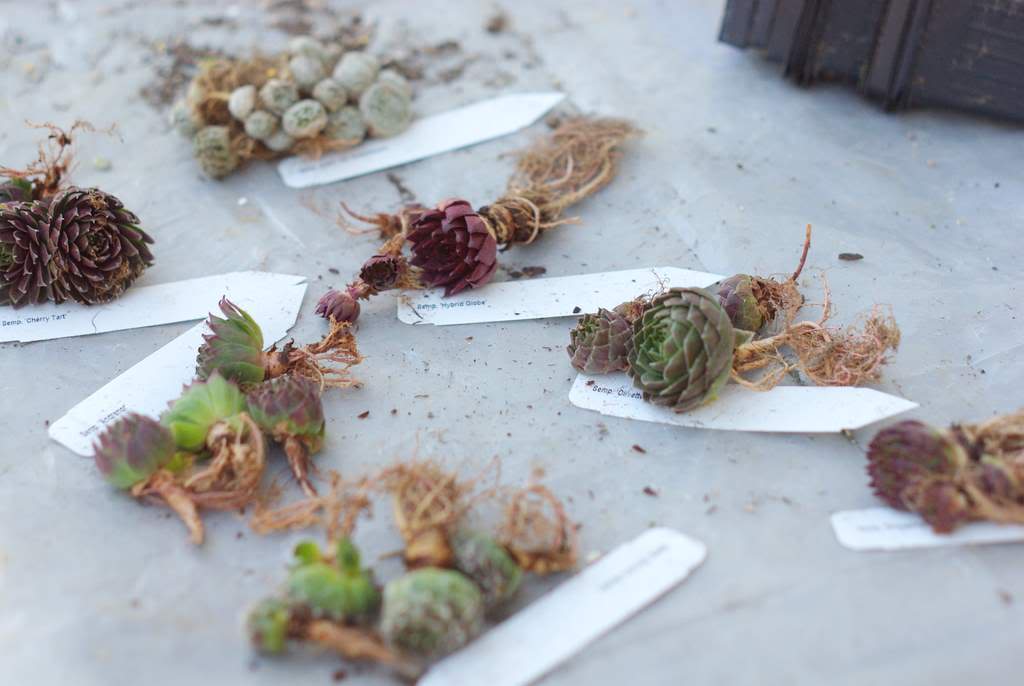
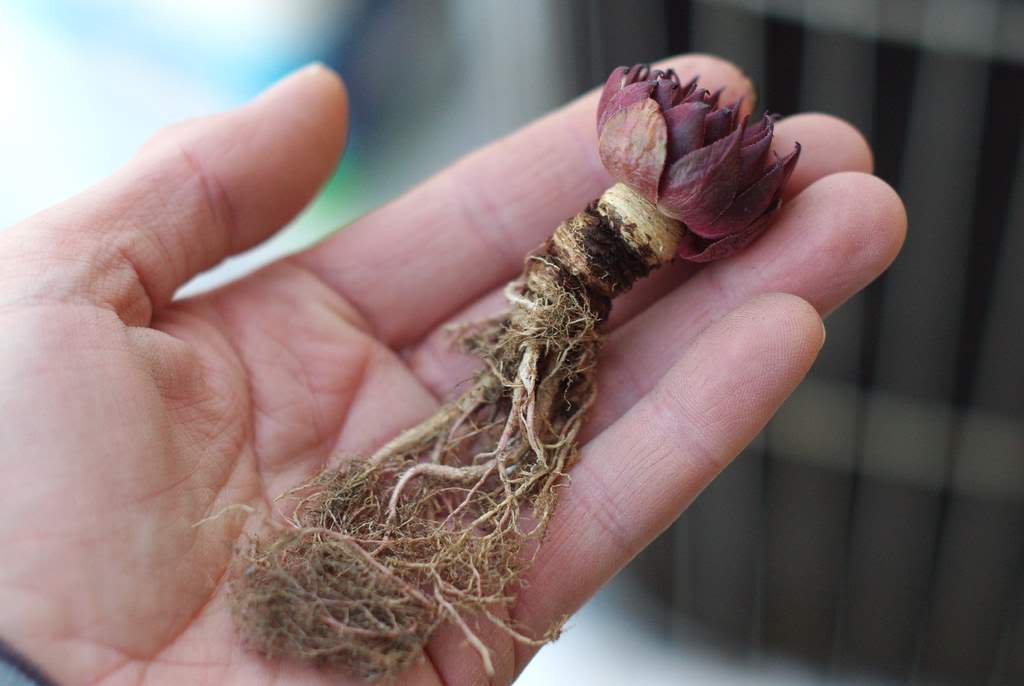
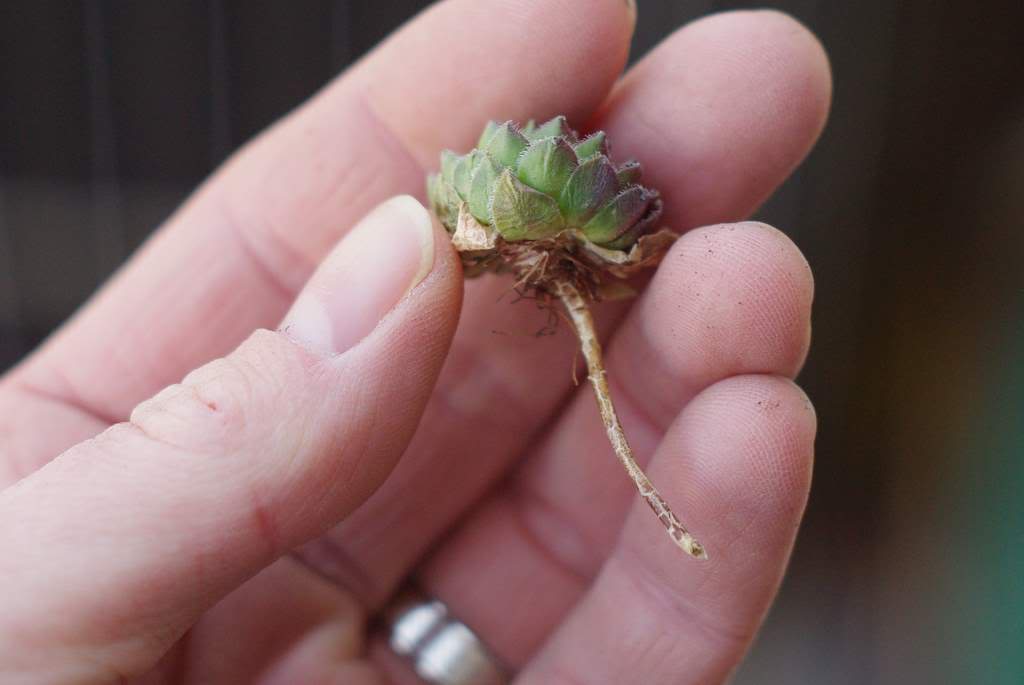
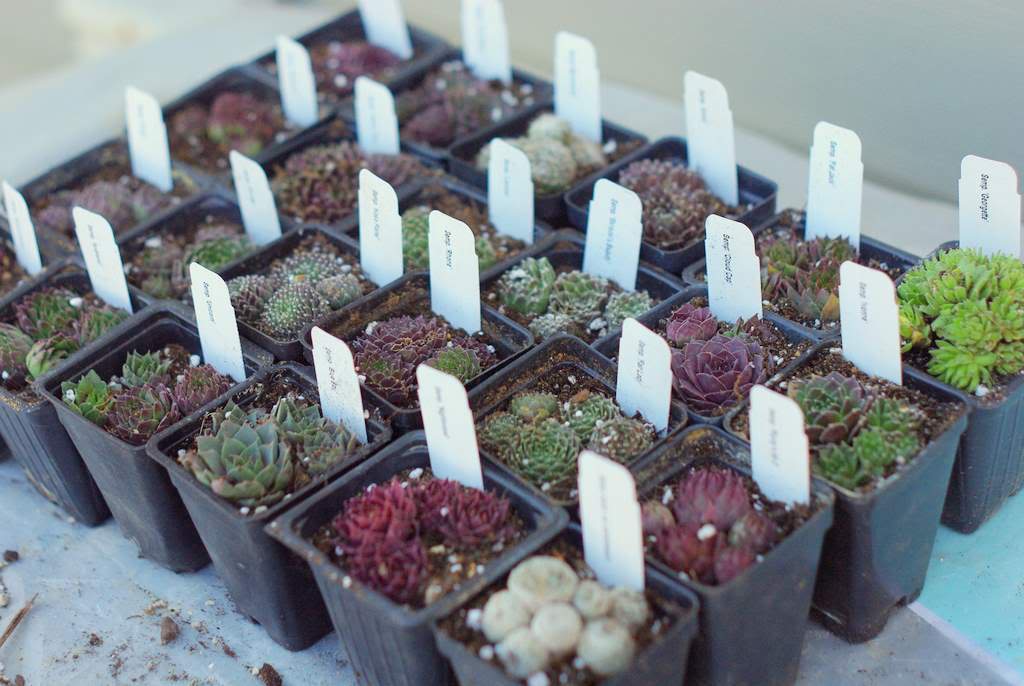

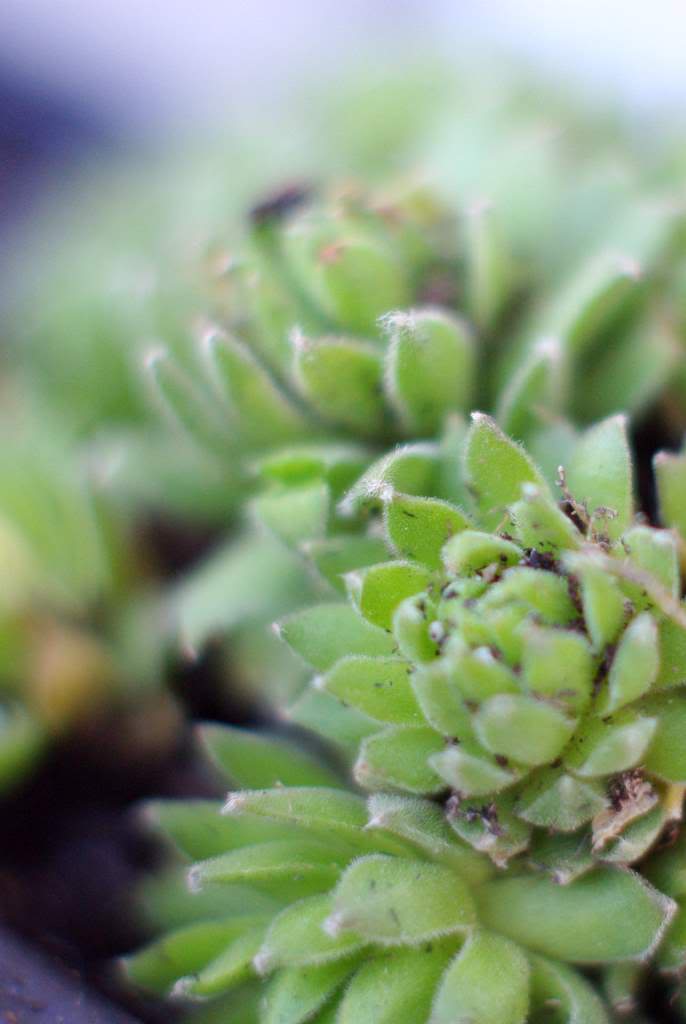

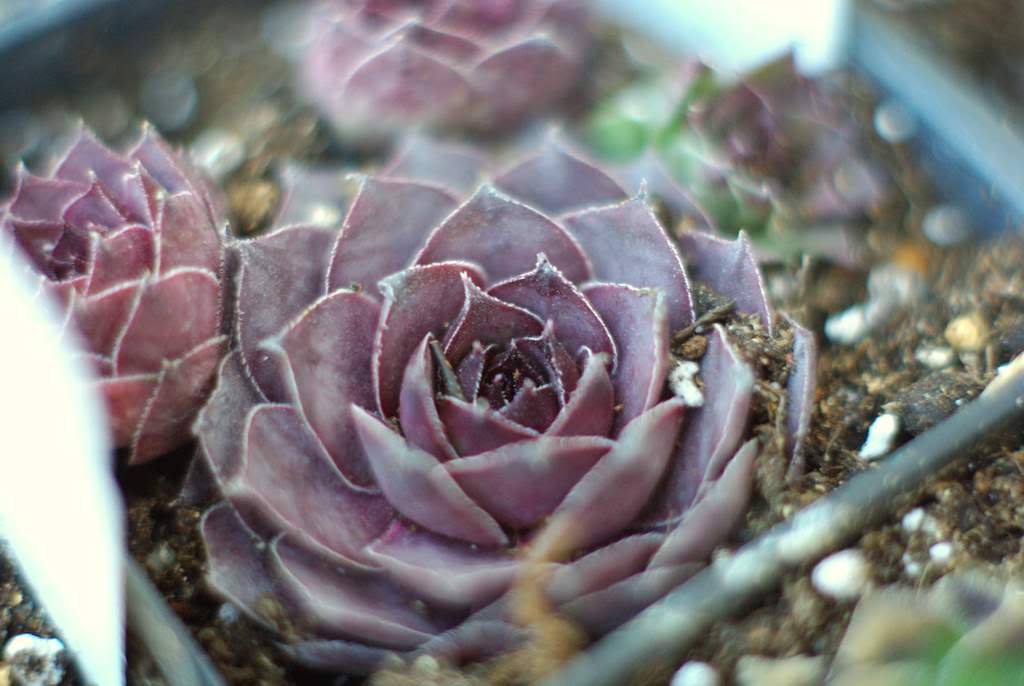
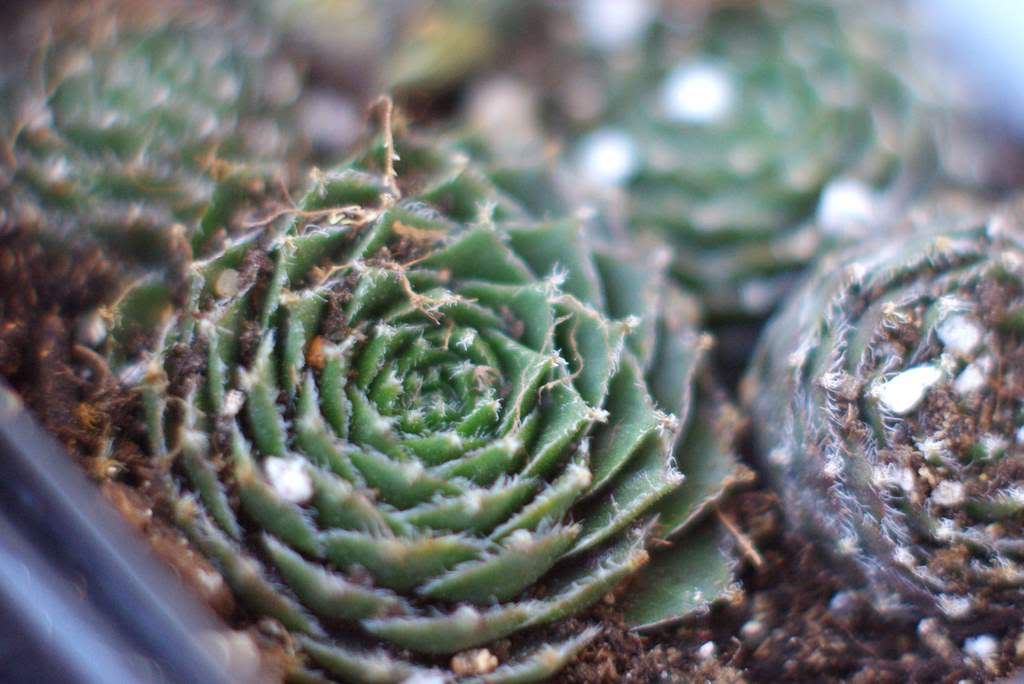
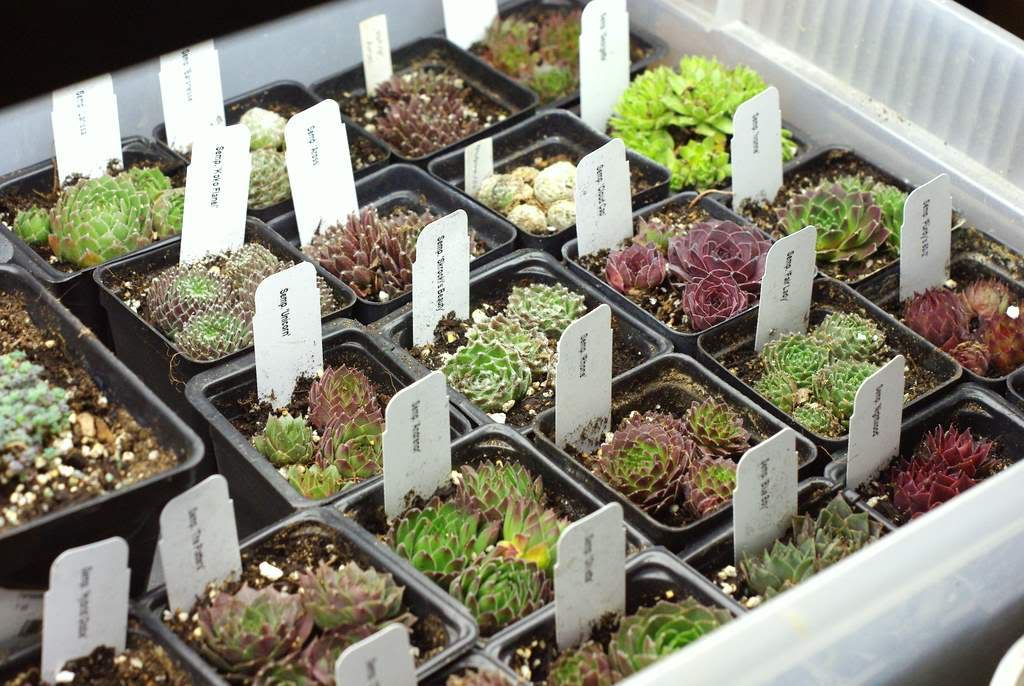



What a great selection you got there! Potted up, they look very impressive.
Most of sempervivum species grow quickly, so in a year you'll probably have five times as many plants. My favorite has got to be Sempervivum arachnoideum--I love those cobwebs! Unfortunately, that's reputed to be one of the slower growing species.
:: Bamboo and More ::
Interesting that semp. arach. was one of the plants that was too big to fit into the small pots so I had to divide it. Perhaps that's why he shipped a larger plant -- because it's slow-growing. I'll find out though. =)
great plants .... im in stl too and have a grop of semp plants. if you are interested in a variety trade... i'd be down. cvargovargo@hotmail.com